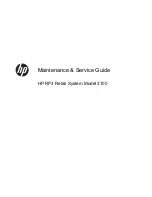
3
EMC INSTALLATION GUIDELINES
Although this unit is designed with a high degree of immunity to
ElectroMagnetic Interference (EMI), proper installation and wiring methods
must be followed to ensure compatibility in each application. The type of the
electrical noise, source or coupling method into the unit may be different for
various installations. In extremely high EMI environments, additional measures
may be needed. The unit becomes more immune to EMI with fewer I/O
connections. Cable length, routing and shield termination are very important
and can mean the difference between a successful installation or a troublesome
installation. Listed below are some EMC guidelines for successful installation
in an industrial environment.
1. Use shielded (screened) cables for all Signal and Control inputs. The shield
(screen) pigtail connection should be made as short as possible. The
connection point for the shield depends somewhat upon the application.
Listed below are the recommended methods of connecting the shield, in order
of their effectiveness.
a. Connect the shield only at the panel where the unit is mounted to earth
ground (protective earth).
b. Connect the shield to earth ground at both ends of the cable, usually when
the noise source frequency is above 1 MHz.
c. Connect the shield to common of the unit and leave the other end of the
shield unconnected and insulated from earth ground.
2. Never run Signal or Control cables in the same conduit or raceway with AC
power lines, conductors feeding motors, solenoids, SCR controls, and
heaters, etc. The cables should be run in metal conduit that is properly
grounded. This is especially useful in applications where cable runs are long
and portable two-way radios are used in close proximity or if the installation
is near a commercial radio transmitter.
3. Signal or Control cables within an enclosure should be routed as far away as
possible from contactors, control relays, transformers, and other noisy
components.
4. In extremely high EMI environments, the use of external EMI suppression
devices, such as ferrite suppression cores, is effective. Install them on Signal
and Control cables as close to the unit as possible. Loop the cable through the
core several times or use multiple cores on each cable for additional protection.
Install line filters on the power input cable to the unit to suppress power line
interference. Install them near the power entry point of the enclosure. The
following EMI suppression devices (or equivalent) are recommended:
Ferrite Suppression Cores for signal and control cables:
Fair-Rite # 0443167251 (RLC #FCOR0000)
TDK # ZCAT3035-1330A
Steward #28B2029-0A0
Line Filters for input power cables:
Schaffner # FN610-1/07 (RLC #LFIL0000)
Schaffner # FN670-1.8/07
Corcom #1VR3
Note:
Reference manufacturer’s instructions when installing a line filter.
5. Long cable runs are more susceptible to EMI pickup than short cable runs.
Therefore, keep cable runs as short as possible.
WIRING CONNECTIONS
The electrical connections are made via screw-clamp terminals located on the
back of the unit. All conductors should meet voltage and current ratings for each
terminal. Also cabling should conform to appropriate standards of good
installation, local codes and regulations. It is recommended that power supplied
to the unit (AC or DC) be protected by a fuse or circuit breaker. When wiring
the unit, use the battery cover to identify the wire position with the proper
function. Strip the wire, leaving approximately 1/4" bare wire exposed (stranded
wires should be tinned with solder). Insert the wire under the screw-clamp and
tighten down the screw until the wire is clamped in tightly. Each terminal can
accept up to two #14 AWG wires.
WARNING:
Lithium battery may explode if incinerated. All leads
will be at the same line potential as the input leads.
INSTALLATION ENVIRONMENT
The unit should be installed in a location that does not exceed the maximum
operating temperature and provides good air circulation. Placing the unit near
devices that generate excessive heat should be avoided.
The bezel should be cleaned only with a soft cloth and neutral soap product.
Do NOT use solvents.
Continuous exposure to direct sunlight may accelerate the aging process of
the bezel. Do not use tools of any kind (screwdrivers, pens, pencils, etc.) to
operate the keypad of the unit.
Installation
The CUB7 series of products meets NEMA 4X/IP65 requirements for
indoor use, when properly installed. The units are intended to be mounted into
an enclosed panel. The viewing window and reset button are factory sealed for
a washdown environment. A sponge rubber gasket and mounting clip are
provided for installing the unit in the panel cut-out.
The following procedure assures proper installation:
1. Cut panel opening to specified dimensions. Remove burrs and clean around
panel opening.
2. Carefully remove and discard the center section of the gasket. Slide the
panel gasket over the rear of the unit to the back of the bezel. Insert the
mounting screws onto both sides of mounting clip. Tip of screw should
NOT
project from hole in mounting clip.
3. Install CUB7 unit through the panel cut-out until front bezel flange contacts
the panel.
4. Slide the mounting clip over the rear of the unit until the clip is against the
back of the panel. The mounting clip has latching features which engage
into mating features on the CUB7 housing.
Note: It is necessary to hold the unit in place when sliding mounting clip
into position.
5. Alternately tighten each screw to ensure uniform gasket pressure.
Visually inspect the front panel gasket. The gasket should be compressed to
about 75 to 80% of its original thickness. If not, gradually turn mounting
screws to further compress gasket.
6. If gasket is not adequately compressed and the mounting screws can no
longer be turned, loosen mounting screws, and check that mounting clip is
latched as close as possible to the panel.
7. Repeat from step #5 for tightening mounting screws.
Summary of Contents for CUB 1
Page 30: ...7 This page intentionally left blank...
Page 46: ...5...
Page 47: ...6...
Page 48: ...7...
















































